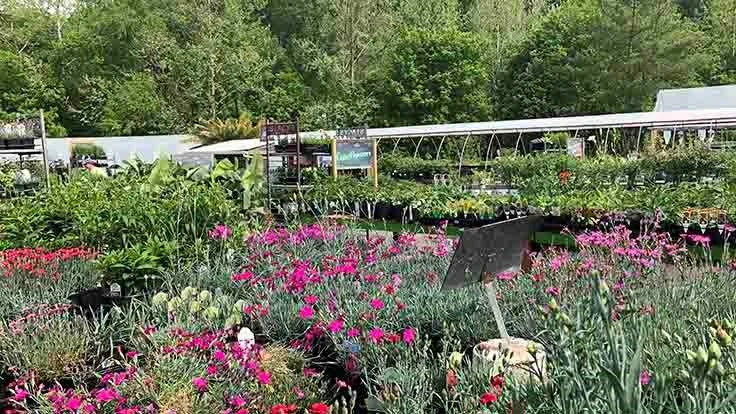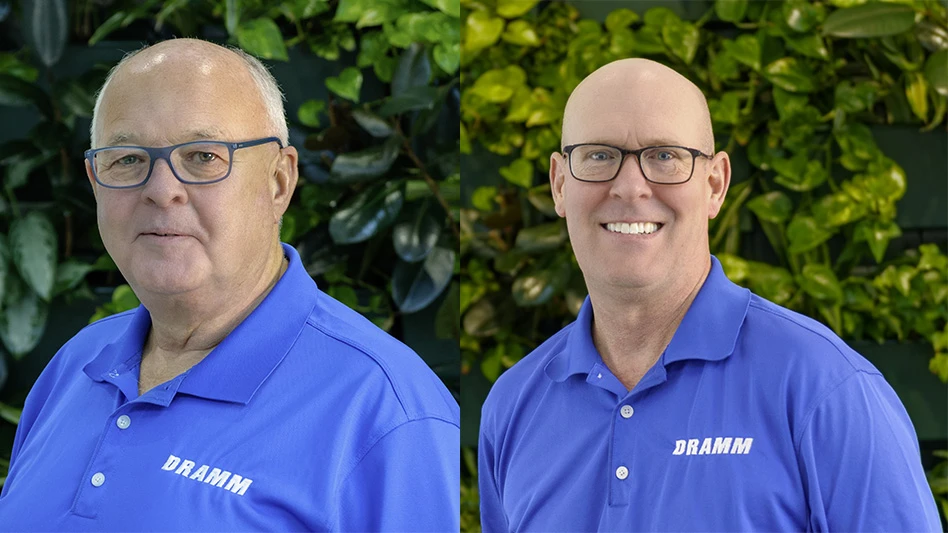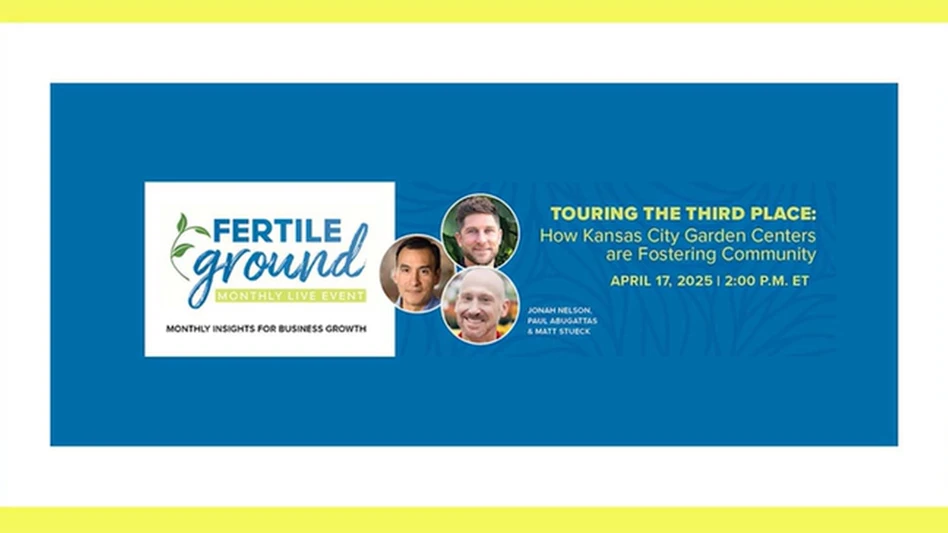

It wasn’t long ago that gardeners buying retail compost had two options: plain, unblended compost either bulk or in an unwieldy, generic bag. As soil health and sustainability gain importance among seasoned gardeners and new convenience-minded converts, interest in bagged compost is growing — and compost companies are responding. Emerging trends are influencing what consumers may expect when they shop your independent garden center’s website and shelves.
Organic certification and labeling
As consumers become more interested in organic edibles, they want assurance that compost products are free of contaminants such as persistent herbicides and other non-organic substances. Organic labeling and certification have become significant factors in their purchasing decisions.

Ron Alexander, president of R. Alexander Associates, Inc., specializes in market research and development for organic recycled products. “There’s a huge upswing in organically-certified compost products,” he says. “As gardeners become more educated, many are demanding organic-certified products.” Alexander notes that more bagged compost producers are taking the extra step to become OMRI Listed. “It has become recognized as a differentiator for retail products,” he explains.
For customers at Mission Hills Nursery in San Diego, Calif., buying “organic” is a high priority. But manager Tiger Palafox says the IGC’s customer base isn’t focused on a particular certification or proof of organic claims. “It’s interesting. Customers trust what’s on the bag. If the label says it’s organic, that’s all they care about. Whether it’s OMRI or not, they just want it organic or natural,” he says.
Local sources and local commitment
The allure of the “local” label hasn’t passed over bagged compost. Alexander notes that several small-scale companies are creating boutique-type products based on very local needs. “This appeals to people buying local fruits and vegetables, and it’s on the uptrend in compost, too,” he says.
Cedar Grove Composting, an award-winning residential and commercial yard and food waste recycler based in Seattle, Wash., produces an extensive line of compost products from local recycling efforts in the Puget Sound area. Their bulk and bagged products retail in local garden centers, and they’re sold directly to consumers and businesses. With the tagline “Make it Local, Use it Local,” Cedar Grove extends their local reach through a “My5 Challenge.” If a resident buys five yards of finished compost — the equivalent of the average recycling household’s annual production — the company donates $50 to a local nonprofit.
St. Louis-area Greenscape Gardens & Gifts is taking local compost a step further. The eco-focused IGC sells a locally sourced compost, but a new product is in development. Greenscape “living systems specialist” George Jacobs is harvesting indigenous microorganisms, with an end goal of [creating] a bagged compost product enriched with local soil microbes. “It’s about getting a living soil going in people’s yards again,” general manager Jennifer Schamber explains. “Local does make a difference.”

Information-rich, instructional packaging
Until fairly recently, many bagged compost products didn’t provide much instruction for consumers. At Mission Hills Nursery, known as the area’s eco-gardening experts, Palafox underscores the need for education regarding organic gardening and compost use. “Our clientele understands feeding soil and not plants. But they don’t necessarily understand why, just that it’s the right thing to do,” he says.
With increasingly diverse compost products entering the market, and a new generation of gardeners expecting easily consumable information, compost producers and marketers are anticipating consumer questions and addressing them in new ways via product packaging.
Some producers are giving terms such as “soil amendment,” “soil conditioner” and “organic matter” prominent label placement and saving “compost” for the ingredient listing. Others address smell — or lack thereof. Many products outline compost advantages, from generic benefits to product-specific claims, and N-P-K ratios, typically reserved for fertilizer labels, are becoming common on compost products, even when the products aren’t registered as fertilizers. “Some are doing it just to be doing it, to draw attention to the presence of nutrients,” Alexander says. “Others are doing it to raise value and make sure people aren’t over fertilizing. It’s another differentiator as buyers become more sophisticated.”
Creative marketing and presentation

Unique product offerings appeal to the collective consumer desire for individuality and a little pizzazz. Specialty ingredients — from worm castings and spent mushroom substrate to lobster shells and buffalo manure — are changing the look of compost and the ways creative producers present bagged compost products.
BuffaLoam, an organic compost company based on a northern Colorado buffalo ranch, markets its “small-batch, craft” buffalo products in the spirit of Colorado’s craft brewing industry and their captivating “untamed valley” origins. Charlie’s Compost, a Kentucky company based on a family-run poultry farm, shares a downhome backstory that connects with natural and organic gardeners. Both companies succeed in creating a personal, authentic connection for their nationally-marketed products.
The two companies also illustrate other creative changes some compost producers have embraced. Both lines include convenient sizes, such as small 8- or 10-pound bags, with natural, paper bag-like packaging that appeals to organic consumers. BuffaLoam’s craft compost bag includes a see-through window, a significant addition that allows shoppers to see the product’s color and texture before they buy. “Aesthetics of the compost products themselves are very important to consumers,” Alexander explains.

Focus on safety and purpose
For many bagged compost shoppers, what’s not in the bag can be as important as what is. Charlie’s Compost stresses their use of vegetarian and antibiotic-free chicken manure. Cedar Grove’s product line emphasizes locally recycled garden prunings, food products and vegetable trimmings — and the absence of biosolids and steer manure.
Tami Kint, director of marketing for California-based Green Acres Nursery and Supply, explains that worries about persistent herbicide residue in green waste run high in the region.

Because of concerns about the ability to control and verify green waste sources, all soil and compost products at Green Acres’ five Sacramento-area locations are free of green waste, as well as construction waste and biosolids, which is organic matter recycled from sewage.
Purpose-specific compost products are also gaining traction. All-purpose compost is being joined by products classified for lawns, vegetable gardens and other specific uses. Alexander stresses that it’s not just marketing, but specialization in mixes — and more specialization is on the way.
“Slowly, as we educate the marketplace, I think we’ll see a lot more specialty blends for very specific applications, and we’re going to see more applications to mitigate the effects of climate change – improved by the addition of stable carbon to the soil. You’ll see more products specific to water management and soil modification,” Alexander says. “It’s an upcoming thing happening on the bulk side that’s transferring over to the bag market.”
As for the future, Alexander predicts more change. “I think the soil side is going to get more complicated. People want something more specific. They don’t want the cheapest stuff. They want the thing that fulfills their need for a specific application,” he explains. And that means more opportunities for creative compost producers and more options for gardeners and forward-thinking IGCs ahead.

Explore the June 2018 Issue
Check out more from this issue and find your next story to read.
Latest from Garden Center
- GIE Media Horticulture Group wins five regional 2025 Azbee Awards of Excellence
- Terra Nova Nurseries introduces rust-free and disease-resistant heucherella
- John T. Nickel, founder of Greenleaf Nursery Co., passes away at 89
- Garden Media Group announces sixth annual Women in Horticulture Week
- Star Roses and Plants announces National Knock Out Rose Day
- The Growth Industry Episode 4: How federal budget cuts are affecting horticulture nonprofits
- Pennsylvania Horticultural Society shares top gardening trends from 2025 Philadelphia Flower Show
- California Spring Trials 2026 dates announced





